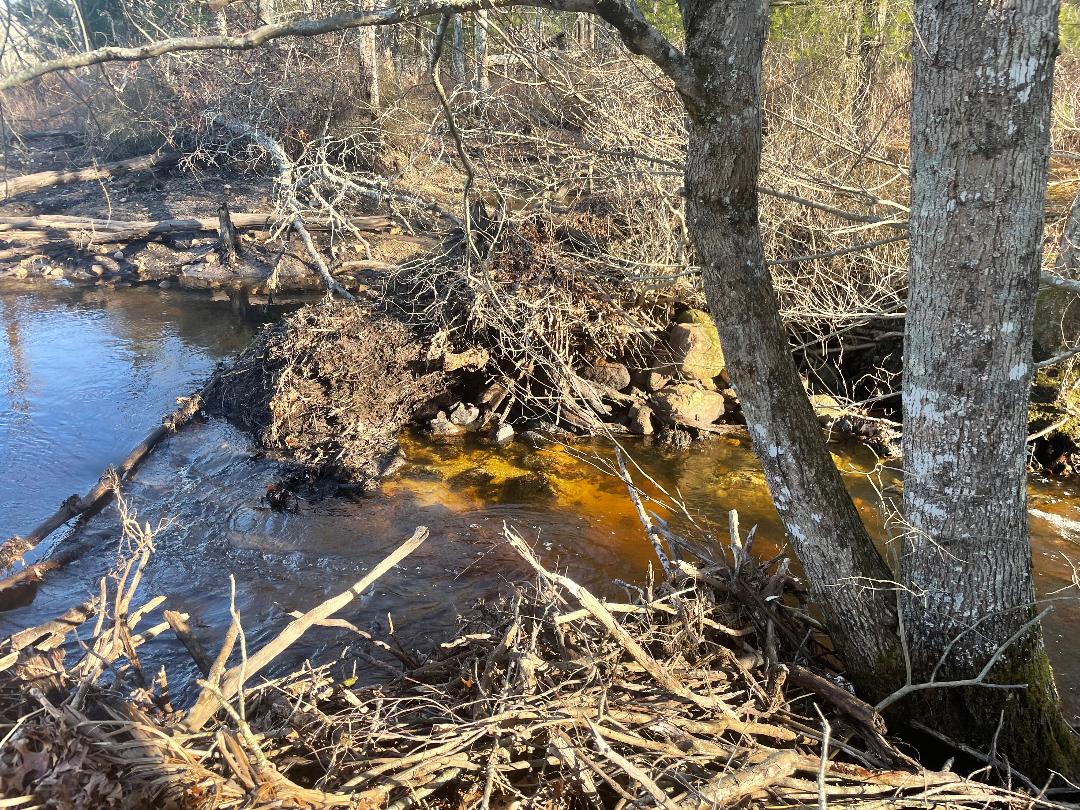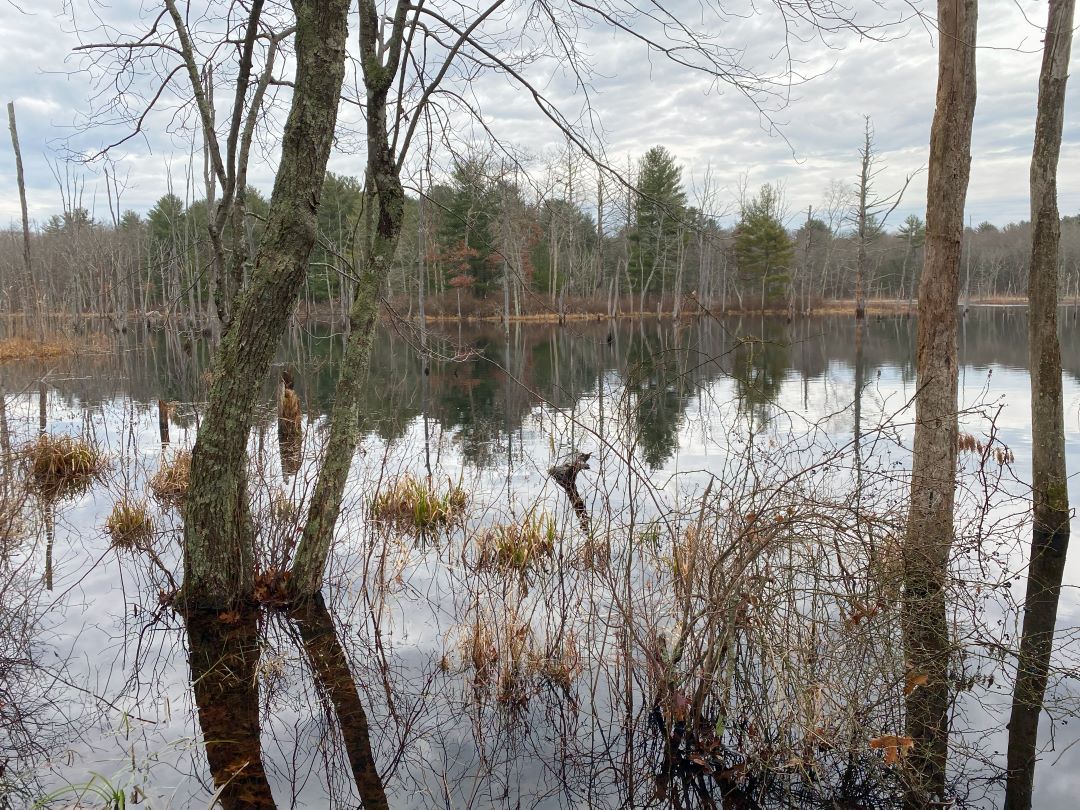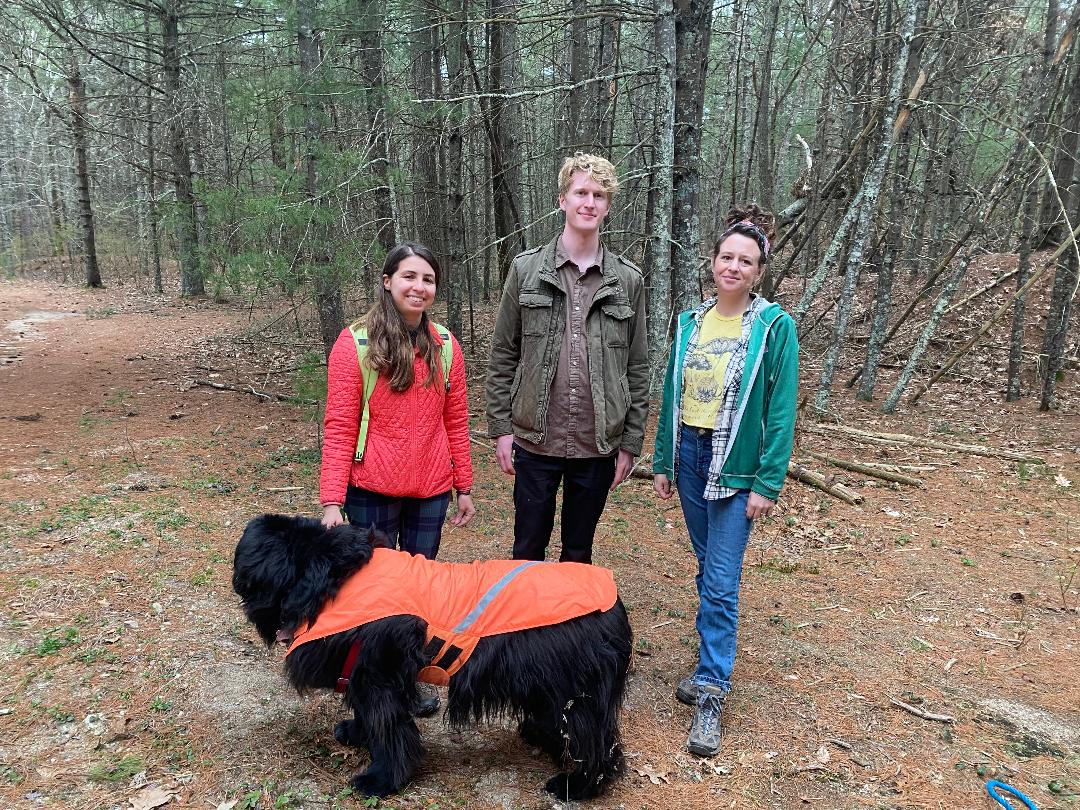Dam Failure on Richmond’s Beaver River Offers Warning, and Welcome Environmental Change
January 15, 2024
RICHMOND, R.I. — Last month, an estimated 2 million gallons of water broke through part of a dam on the Beaver River, inundating the riverbed and flooding two roads downstream.
The failure caused minimal damage and likely will allow for the rehabilitation of the river. Still, as Rhode Island begins to see more frequent and heavy rainfalls due to climate change that will test the state’s dams, the failure offers a warning.
The dam that washed out during the Dec. 19 storm, earthen and small, was built in the 1800s, at least, according to Tim Mooney, marketing and communications manager for The Nature Conservancy of Rhode Island, which owns the dam and Beaver River Preserve in which it sits.
The dam likely powered a grist mill downstream, the remnants of which can still be seen in the mounds of rounded boulders that formed its foundation.
By the time it failed, the dam had become more beaver- than human-made. The creatures who had made their home in the head pond above what was left of the dam fortified it with mud and dead vegetation, piled on top of the old stone structure.

The added pressure from the beaver activity was just one of several factors that likely contributed to the failure, according to James Turek, chair of the Richmond Conservation Commission and a restoration ecologist at the National Oceanic and Atmospheric Agency (NOAA).
Standing on top of the parts of the dam’s spillway last week, Turek pointed to the toppled, rounded rocks in the riverbed that used to form part of the structure.
The original engineering of the dam, although impressive for the time, had its faults.
“Trying to stack bowling balls isn’t a good idea,” Turek said.
The “bowling balls,” age of the dam, added pressure from the beavers, and heavy rain during the December storm created the perfect conditions for a failure, he explained.
For Turek, the failure forebodes both good and bad news.
In his role at NOAA, Turek has been involved in efforts to deal with Potter Hill Dam in Westerly, a damaged structure that poses problems for people and fish. The town of Westerly is looking to remove or modify the dam, in part, to lower the risk of failure.
That dam, which is much larger than the centuries-old dam on Beaver River and surrounded by development, is classified as “low hazard” by the state Department of Environmental Management, meaning it likely would not result in a loss of life or major economic damage should it break.
Because of that designation and the rare occurrence of dam failures, Turek said that it’s a factor that’s not always on the forefront of people’s minds or considerations. But failures do happen, and they do cause damage, as failure on the Beaver River shows.
Despite the warning it may signal, overall Turek said the removal of the dam could have a positive impact on the area’s ecology.

Brook trout could be the biggest beneficiaries of the dam’s removal, Turek said. Now, the migratory fish will be able to move up the river more easily to spawn, and as a bedrock species, their renewal in the area could help foster positive change throughout the food web.
The Richmond Conservation Commission had identified the dam for removal, but getting equipment into the preserve, finding the funding, and receiving the proper permits to do it had made it a difficult task to accomplish, Mooney said.
From the TNC’s perspective, “nature took care of the restoration,” he said.



